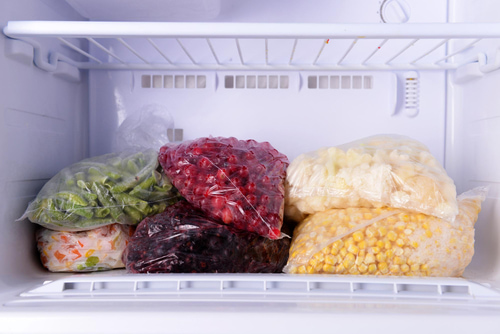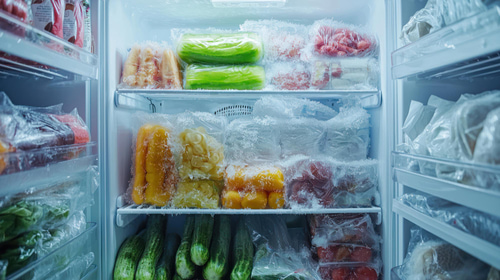Blog
Which ready meals can be frozen?

Modern life often leads us to seek quick and efficient solutions for preparing our meals. A popular option is to turn to prepared meals that we can have ready in the freezer for those days when time is limited. But, what prepared meals can be frozen without losing flavor or texture? In this article from Kuoko, we’ll share the best options for freezing, how to do it correctly, and some tips for maintaining the quality of your dishes.
First, it’s essential to understand that not all foods behave the same when frozen. Some foods may change in texture, flavor, or even become a less enjoyable culinary experience after being in the freezer. However, with a bit of knowledge, you can maximize the shelf life of your prepared dishes without sacrificing quality.
Soups and Stews
Soups and stews are ideal for freezing. Most of these dishes freeze very well, especially those with a broth-based foundation. Recipes for freezing soups and stews should be cooled completely before being placed in the freezer. It’s also crucial to use airtight containers or freezer bags to prevent freezer burn, which can affect the flavor.
Lasagnas and Savory Pies
Lasagnas and savory pies, such as quiches, are freezable meals that can maintain excellent condition for several months. These dishes typically contain layers of ingredients that mix well and do not lose texture when thawed and reheated. Be sure to let these dishes cool completely before freezing, and when reheating, do so slowly for the best results.
Meats and Meat-Based Dishes
Cooked meats, such as burgers, meatballs, or roast chicken, can also be frozen. It’s important that these meals are cooled quickly after cooking to prevent bacterial growth. To maintain quality, wrap the meats well in aluminum foil or freezer bags before storing them in the freezer. When reheating, make sure to do so thoroughly to eliminate any potential bacteria.
Curry and International Dishes
Curries and other international dishes with a sauce or curry base are also suitable for freezing. These dishes tend to retain their flavor and texture after being thawed and reheated. As with soups and stews, cooling them before freezing and using proper containers is key to preserving their quality.
Cooked Vegetables
Cooked vegetables can be a bit more delicate, but many freeze well if prepared correctly. Cooking vegetables al dente before freezing helps to maintain a good texture. Make sure to cool them quickly after cooking and package them properly to prevent loss of flavor.
Additional Tips for Freezing Prepared Meals
- Cool Before Freezing: Allow meals to cool to room temperature before placing them in the freezer. Freezing food while it is still hot can raise the temperature in the freezer, which may affect other foods and the quality of what you are freezing.
- Use Proper Containers: Use airtight containers or high-quality freezer bags to prevent air from entering and forming ice crystals, which can affect the texture and flavor of the food.
- Label and Date: Label your meals with the date they were frozen. This will help you keep track of how long they have been in the freezer and allow you to use older meals first.
- Portion: Consider dividing meals into individual portions before freezing. This makes it easier to thaw and reheat only the amount you need, reducing waste.
What Not to Freeze
Not all prepared foods freeze well. Some foods, such as salads with dressings, fried foods, and dairy products, can suffer negative changes in texture and flavor. For example, salads with dressing tend to become watery and unappetizing after thawing. Fried foods can lose their crispiness, and dairy products, like cream-based sauces, may separate or curdle.
By knowing what foods can be frozen and how to prepare them properly for the freezer, you can save time and effort in the kitchen without sacrificing the quality of your meals. With these tips, you’ll be on your way



